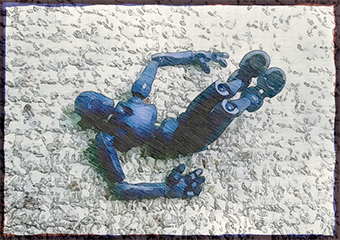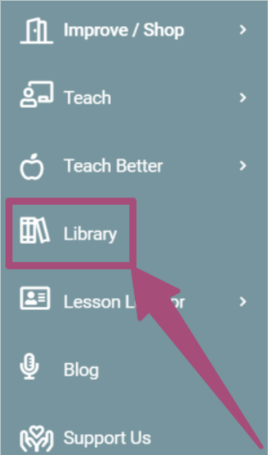
Serendipity
The day before yesterday, I took another turn teaching the 8:00 AM (Pacific time) An AY a day group lesson. When I’d checked the schedule a few days before I saw that no one had signed up for the slot. I’ve been managing the side-effects from radiation treatment (for tonsil cancer) so well that I still have a voice.
The other reason I volunteered was because the Awareness Through Movement® lesson on the schedule for that day, Alexander Yanai 98 ZEN SITTING, is one with which I’ve had a long and rocky relationship. Ever since I started getting to know this ATM®, back when I was an assistant trainer, ten or so years after graduating from the Amherst teacher training program, it piqued my interest. At first, I was both fascinated — by its focus on the

movements of the top vertebrae of the neck and the bottom vertebrae of the lower back — and frustrated by my difficulty in figuring out how to do some of the movements the instructions described. Coming back to ZEN SITTING over the years, in my personal practice and when teaching it in classes, workshops, and teacher trainings, I began to fathom its depths, finding ideas and images that demystified the aspects that had been foggiest for me as well as those that I’d discovered were difficult for others.
From the teacher’s perspective, I discovered that the lesson is doubly demanding. That’s because even though they are quite precise and thorough, the instructions are difficult to decode. There’s a good number of students who find themselves foiled by the unfamiliar movements and flummoxed by their inability to fathom what’s being asked for. And then there is a sizable proportion of each class who thinks they’re following the instructions and are, instead, doing exactly what was forfended.
 As serendipity would have it, doing the lesson the day before, which was AY 97: OPTIMAL LIFTING OF THE KNEES, provided a piece to the puzzle. About halfway through this ATM, in the midst of lying on the back turning my bent legs, together as one piece, around themselves in the air, I felt the sudden rush of excitement of a EUREKA! moment. The unusual movement I was making in this unfamiliar position is exactly what’s called for in one of the most challenging sections of the AY 98. Except in this lesson, the places that are moving and the ones that are still flips around so that the action of the skeleton is the same but the motion is coming from the other end: instead of moving from the lower vertebrae to move the spine around the pelvis, the movement of the legs produces the same motion of the pelvis in the lumbar spine.
As serendipity would have it, doing the lesson the day before, which was AY 97: OPTIMAL LIFTING OF THE KNEES, provided a piece to the puzzle. About halfway through this ATM, in the midst of lying on the back turning my bent legs, together as one piece, around themselves in the air, I felt the sudden rush of excitement of a EUREKA! moment. The unusual movement I was making in this unfamiliar position is exactly what’s called for in one of the most challenging sections of the AY 98. Except in this lesson, the places that are moving and the ones that are still flips around so that the action of the skeleton is the same but the motion is coming from the other end: instead of moving from the lower vertebrae to move the spine around the pelvis, the movement of the legs produces the same motion of the pelvis in the lumbar spine.
At the beginning of the lesson, I warned the participants that I’d be borrowing something from the previous day’s ATM and folding it into today’s class to teach a kind of hybrid lesson. Even though we would be deviating from the itinerary that Moshe’s lesson laid out, I was so excited about my discovery and what I’d learned from it that I decided to take the risk of teaching the ATM in a new way. I say that because the idea of the group is to teach the lessons from Moshe’s materials so we’d be leaving the standard procedure. (Because the group is doing each volume of lessons twice, I knew that folks had a chance to experience the original version as well.)

The audio recording of the lesson is now accessible to anyone who has a Mind in Motion Online (MIMO) account. Log into your MIMO account and click on the Library option that appears in the main menu (on the left side of the page). Search for FREE LESSONS > ALEXANDER YANAI. You’ll see ZEN SITTING listed as the last lesson in that section. Click on the title to go to the page where you can either download the audio (MP3) files to listen to the lessons whenever and wherever you like or stream the lessons immediately and directly to your internet-connected smartphone, tablet, computer, etc.
If you have a professional Become a Better Teacher MIMO account, you’ll also get to access the post-lesson discussion that followed. The conversation was wide-ranging — from how this lesson would be good for pianists to understanding what’s happening muscularly and skeletally — and fascinating — how do you know understand what an ATM is calling for?
(If you have yet to claim your free MIMO account, you can sign up for it now.)
Your thoughts?
Please let us know your perspective! Add your comments, reactions, suggestions, ideas, etc., by first logging in to your Mind in Motion account and then clicking here.
Commenting is only available to the Mind in Motion Online community.
Join in by getting your free account, which gives you access to the e-book edition of Articulating Changes (Larry's now-classic Master's thesis), ATM® lessons, and more — all at no charge whatsoever.
To find out more and sign up, please click here.
Please share this blog post
 This work is licensed under a Creative Commons Attribution-ShareAlike 4.0 International License
This work is licensed under a Creative Commons Attribution-ShareAlike 4.0 International License
This blog may contain one or more affiliate links. When you click on a link and then make a purchase, Mind in Motion receives a payment. Please note that we only link to products we believe in and services that we support. You can learn more about how affiliate links work and why we use them here


Hi Larry
I appreciate that your experience of the challenge of both teaching and doing the lesson. It gave me a sense of relief that others experience of frustration is a part of doing some lessons.
Hello Dave –
Rest assured, frustration is a part of learning for a-l-l of us. If someone doesn’t experience confusion, uncertainty, frustration, and annoyance . . . then they’re either not following the directions or fooling themselves,
Larry